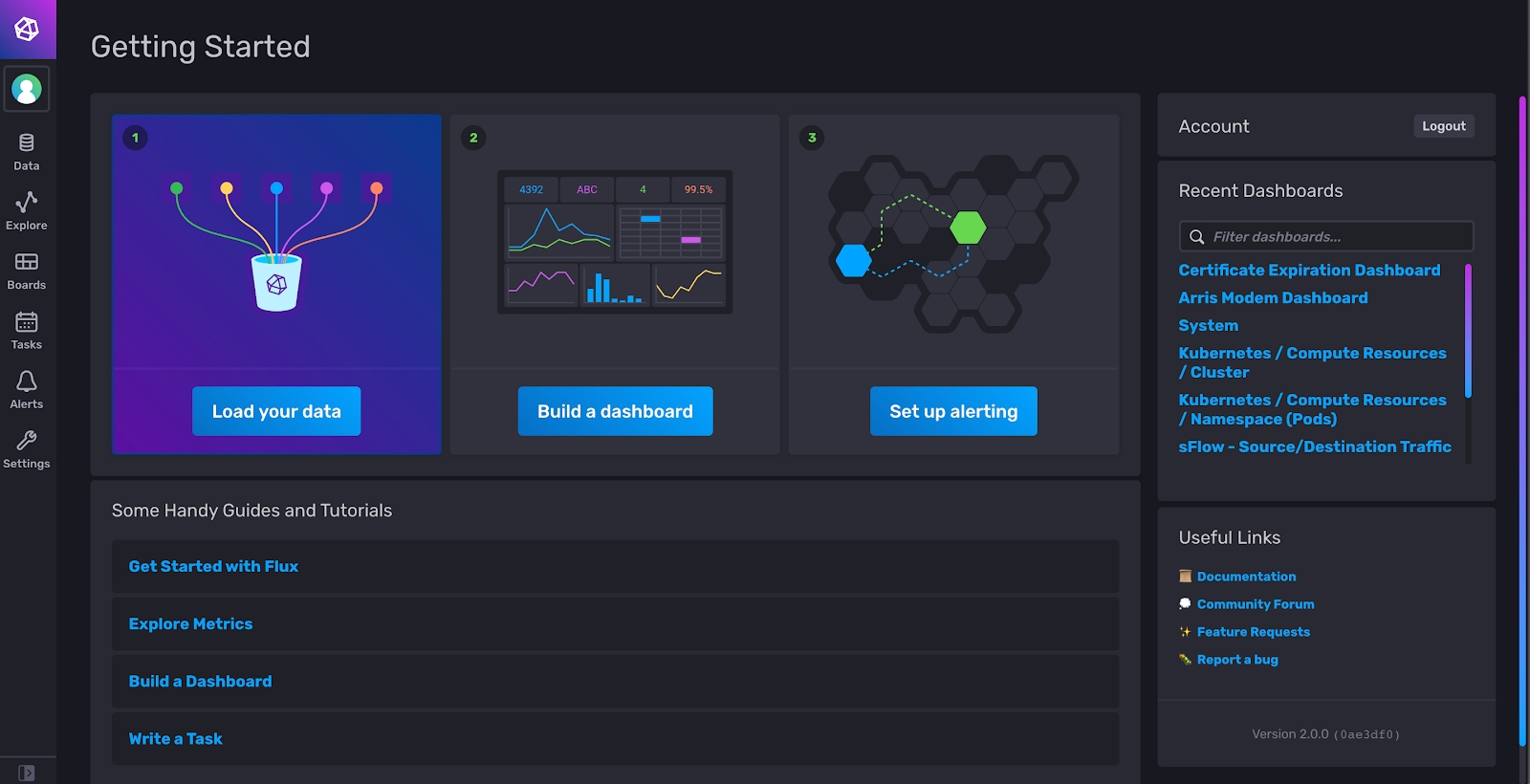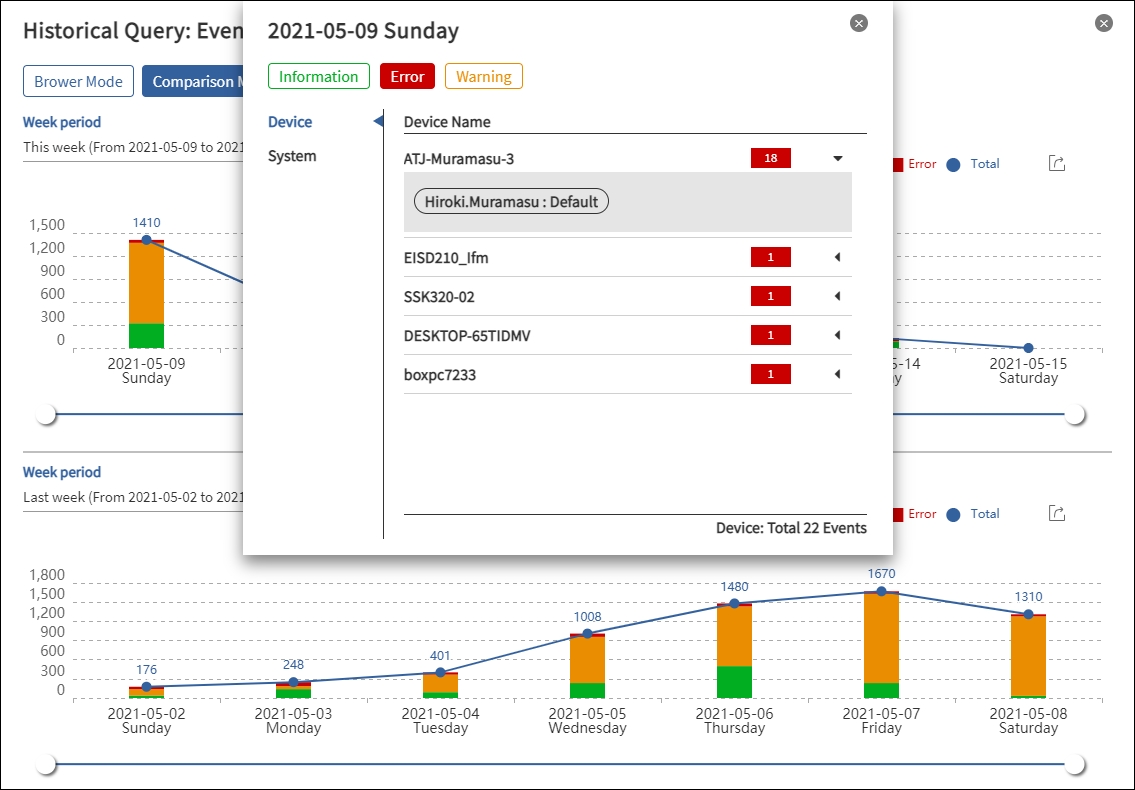Version 4.3.10
More Comprehensive and Intuitive Operation
Industrial IoT monitoring with InfluxDB (Time-Series Database)
The solution to provide real-time insight and analytics for your manufacturing process — collecting, storing and visualizing sensor data from your sensors, devices and industrial equipment. Over the past few years, the IoT community has embraced InfluxDB as a cornerstone of the solutions they build. Whether modernizing or greenfield, InfluxDB has helped many in working with vast quantities of sensor and device data.

Now, DeviceOn officially fully supports InflubDB v2 for IoT Data
DeviceOn will automatically collect your IoT data and store in InfluxDB. Through the features of influxDB, data insight and analytics can be accelerated.
Scalability Collecting event data from your equipment is just the beginning. True digital transformation requires more data sources and more analysis of the combined data to gain a better understanding of your systems. InfluxDB is a high-performance data store written specifically for time series data. It allows for high throughput ingest, compression and real-time querying.
Open With the availability of so many open source tools, operators are no longer required to purchase arcane closed source solutions. Instead, they can look to building their own data historian replacements or buy a ready-made solution that is based on open source. This provides the operator with the freedom to quickly innovate and never be locked in to a single solution that could easily and quickly become obsolete.
Built for developers InfluxDB provides write and query capabilities with a command-line interface, a built-in HTTP API, a set of client libraries (e.g., Go, Python, and JavaScript) and Telegraf plugins for common data formats such as OPC-UA, ModBus, MQTT and more. In addition, the Influx Community is diverse and highly motivated, making contributions in code, documentation, and advocacy for the InfluxDB and Telegraf projects.
Event Log Analytics and Mutiple User Management
In order to make it easier and faster for the IT or operator to understand the current or historical equipment status, we have improved the Event Log analysis. You can find the problematic equipment or any abnormal events in the system from the dashboard at a glance.

Increase Data Write Performance over 30%
DeviceOn re-optimizes and adjusts the storage mechanism for the data model of the IoT devices and supports the two most popular databases (MongoDB, InfluxDB) at the same time, and improves the performance by about 30% compared with the previous version (v-4.3.3).
Continuous Notification and IoT Data Feeder
In response to third-party IoT integration applications, proactively push data to third parties. Developers no longer need to obtain data through the Restful API (polling). This WebSocket mechanism is not only more instantaneous but also saves network resources.
Industrial Display Monitor and Adjusting
In the v-4.3.3 version, we have provided remote monitoring for Industrial Display. The features includes (“Luminance”, “Color Temperature”, “Contrast”, "Brightness" and Resolution). for the version, Multi-screen (extend, clone) has been supported.
Automatic Failover Design
The stand-alone version of DeviceOn integrates all services on the same hardware device. In most situations, we can run very stably and smoothly. At the same time, we can manage thousands of devices based on different hardware specification, but we also consider and handle the abnormal, burst data into the DeviceOn server.
There is no problem to support instant data traffic in the short time. Even if the hardware load is exceeded for a long time, resulting in data loss. After the data frequency is restored to the range that the hardware can carry, the service is self-recovering under the DeviceOn design ability, no need to manually restart the repair service.
Third-Party Updates
OpenJRE (v1.8.0_275)
Tomcat (v9.0.41)
RabbitMQ (v3.8.9), Erlang 24
PostgreSQL (v10.15)
MongoDB (v4.2.11)
Grafana (v7.3.5)
Last updated
Was this helpful?